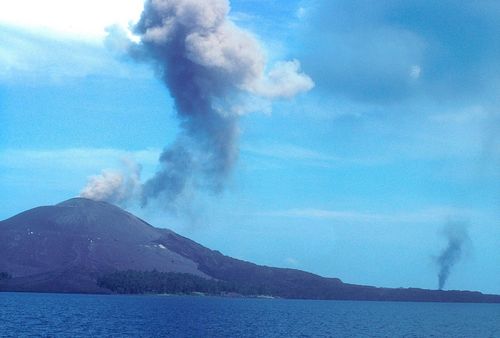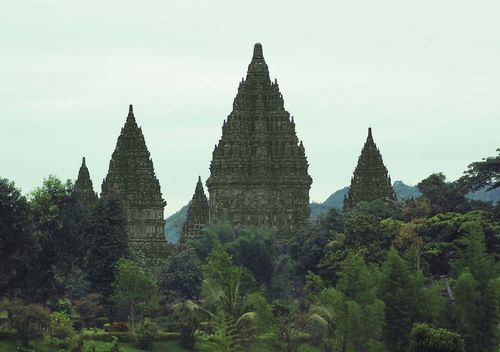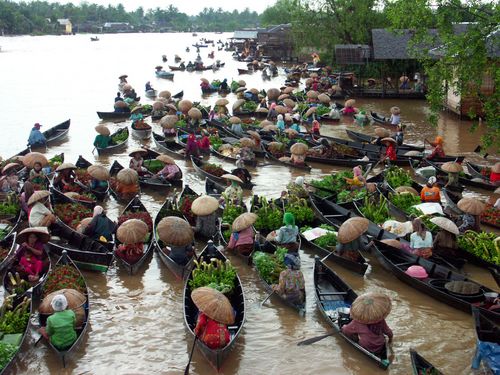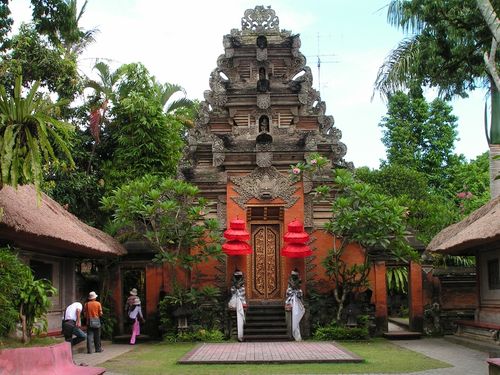|
|
Indonesia is a tropical emerald that serves as an ecological demarcation point. It is the world’s largest archipelago with 18,108 islands, which straddle around the equator and the “Ring of Fire”. The widespread discrimination in variety of flora and fauna over the islands of the nation highlights the existence of Wallace Line that signifies environmental variation of Asian and Australian regions. Finding its roots in the Greek words of "Indos" and "nesos", which mean Indian and islands respectively, Indonesia displays stunning range of landscapes, cultures and festivities. It is a mystical and lush equatorial paradise graced with swaying palm trees, pristine beaches, greeneries of vast paddy fields and vibrant rituals. Bahasa Indonesian is the official language and boasts of world’s largest Muslim-dominated population.
Geography
Indonesia is a part of the huge Malay Archipelago, and out of the thousand islands under its jurisdiction, only 6000 are inhabited. Still the land area is vast enough to sustain the largest population density in the world. The islands are stretched for 5,150 km between the Australian and Asian continental mainland and divide the Pacific and Indian Oceans at the Equator. The five main islands of Indonesia are Java, Sumatra, Borneo or Kalimantan, Sulawesi and Irian Jaya or New Guinea. Java is home to 70 percent of the country's population. Indonesia shares its international boundaries with Papua New Guinea in the island of New Guinea, with East Timor in the Timor Island and with Malaysia and Brunei on the island of Kalimantan. Jakarta, on the island of Java, is the capital city. Surabaya, Bandung, Medan, Palembang, Bali, Flores, Sumba, Lombok and Semarang are other major popular destinations of this southwest Asian country.
 Krakatau Volcano
Krakatau Volcano
|
Climate
Split by equator from the middle, the climatic conditions of Indonesia follow a typical tropical pattern. The atmosphere is basically hot with high degree of humidity. But the mercury never reaches a scorching level as heavy rainfall balances it. However, it is not the Australian dry winds and Ocean currents but earthquakes, volcanic eruptions and tsunamis that wreck havoc in the country. Indonesia’s position above the intercontinental-plate tectonic meeting point makes it vulnerable to such hazards of nature.
 Temple at Pura Gunung Kawi
Temple at Pura Gunung Kawi
|
History
Indonesia has a long history of surviving oppressions successfully, natural or man-made. The fossils of "Java Man" dating back to some 500,000 years, is the first evidence of human existence in the islands of Indonesia. Further, due to its proximity to the mainland of India and China, the archipelago witnessed huge influx of Indian traders and Chinese priests. The great Hindu and Buddhist empires began to emerge and by seventeenth century they spread all over the islands. The monumental Hindu temple of Prambanan in the vicinity of Yogyakarta and the spectacular Borobudur Buddhist sanctuary are the evidence of this flourishing era. After failed attempts of invasions, Islam arrived in Indonesia with the Arab traders and merchants. The first European wave touched the shores of Indonesia in 1509 when the Portuguese trading posts were established in Malacca on the Malay Peninsula. However, they were soon ousted by Dutch East India Company or VOC. The Dutch expanded their control of the entire area into the 17th and 18th centuries and retained it for the most part until the outbreak of Second World War in 1939. A brief period of British rule lasted between 1811 and 1816. Napoleon’s attack and Germany’s invasion over Netherlands weakened its stand in the Dutch East Indies or Indonesia. Japanese forces arrived in the islands during World War II but their surrender in 1945 signalled the beginning of struggle for independence. Indonesia proclaimed its independence on August 17 that same year under the leadership of Sukarno and Mohammad Hatta. Though the Dutch denied recognising the newfound status of Indonesia but after a UN intervention, Indonesia's sovereignty was finally achieved on December 9, 1949.
 Hindu temple in Yogyakarta
Hindu temple in Yogyakarta
|
Economy
Indonesia faced many stumbling blocks in its way to economic prosperity. The poor financial policies of President Sukarno, corruptions in the reign of General Suharto, domestic political instabilities and Asian market crisis of 90s and terrorist attacks on the twenty first century shook the country’s fiscal segment. Despite being the only Asian member of OPEC, Indonesia lagged behind due to lack of innovation of new technologies. However, it has recovered substantially on the basis of increased level of investment and stringent government strategies. Around eighty percent of Indonesia's Gross Domestic Product is almost equally divided between services and industry. Agriculture accounts for about seventeen percent of the GDP and provides employment for forty-five percent of the working population.
 Kalimantan floating market
Kalimantan floating market
|
Politics
The political system of Indonesia is based on a 1945 constitution that was extensively reformed after the end of near tyrannical rule of President Suharto. It proclaims the unicameral House of Representatives or Dewan Perwakilan Rakyat as the highest legislative authority of the country. The 550 members are popularly elected following the proportional representation system in every five years. The People's Consultative Assembly or Majelis Permusyawaratan Rakyat consists of 195 indirectly selected members and together with the DPR members they determine national policy, consider constitutional amendments and other changes. The president and vice president are popularly elected too and they govern with help from a set of cabinet ministers. The Supreme Court or Mahkamah Agung heads the judiciary of Indonesia.
 Royal Palace in Bali
Royal Palace in Bali
|
|
|

